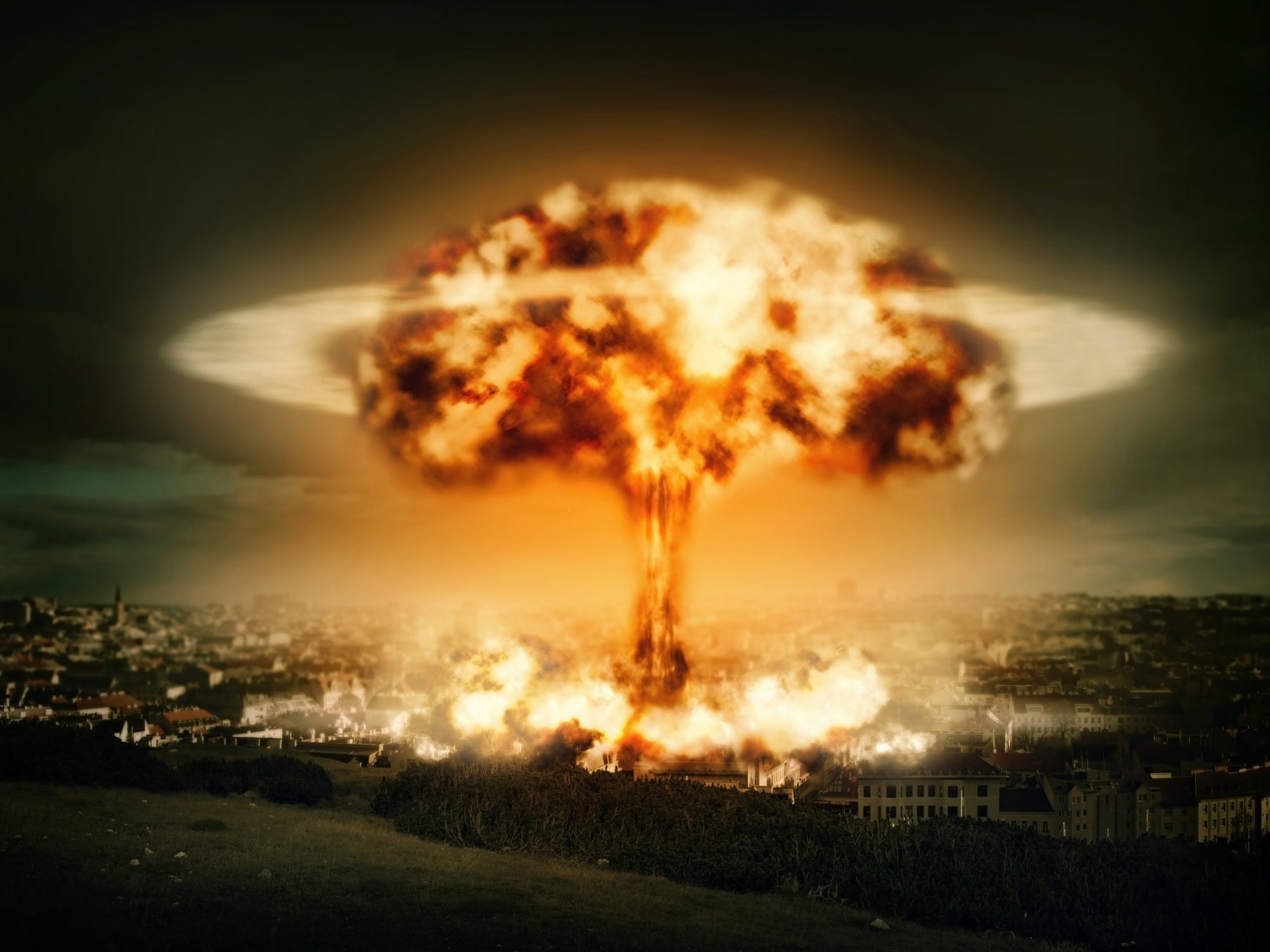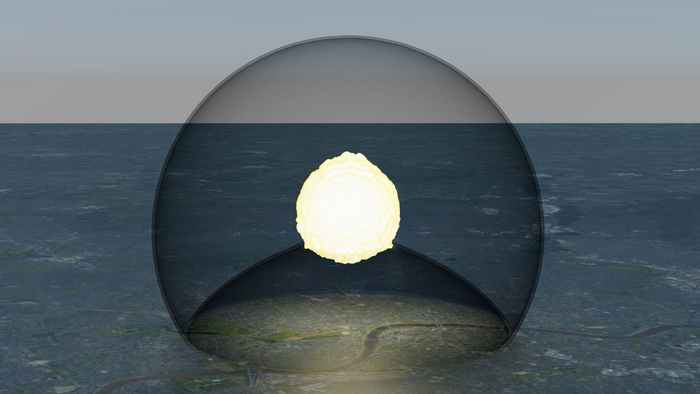War in Ukraine and a Russian leader threatening nuclear is frightening; ever wondered how to shelter from a nuclear bomb?
The truth is – a nuclear bomb is very bad news, and there is nowhere completely safe to be. What would happen if there was a nuclear war?
Anything or anyone too close by is instantly vaporized and radiation, even at a distance, can cause serious health risks. Between these distances is also dangerous as the blast wave generated by the explosion produces airspeeds strong enough to lift people into the air and cause serious injury. To put it bluntly, there is nowhere good or safe to be.
Researchers from the University of Nicosia simulated an atomic bomb explosion from a typical intercontinental ballistic missile and the resulting blast wave to see how it would affect people sheltering indoors. They wanted to test how people could shelter from a nuclear bomb.

What did the simulations show?
In the moderate damage zone, the blast wave is enough to topple some buildings and injure people caught outdoors. However, concrete structures, which are much sturdier, may be able to remain standing.
Using advanced computer modelling, researchers studied how a nuclear blast wave speeds through a standing structure which included rooms, windows, doorways, and corridors. This allowed them to calculate the speed of the air following the blast wave and determine the best and worst places to be.
“Before our study, the danger to people inside a concrete-reinforced building that withstands the blast wave was unclear,” said author Dimitris Drikakis. “Our study shows that high airspeeds remain a considerable hazard and can still result in severe injuries or even fatalities.”
The results clearly show that being in a sturdy building is not enough to avoid harm. In fact, tight spaces can increase airspeed, and the involvement of the blast wave causes air to reflect off walls and bend around corners. In the worst-case scenario, the blast can produce a force equivalent to 18 times a human’s body weight.
‘The most dangerous critical indoor locations to avoid are the windows, the corridors, and the doors’
“The most dangerous critical indoor locations to avoid are the windows, the corridors, and the doors,” said author Ioannis Kokkinakis. “People should stay away from these locations and immediately take shelter. Even in the front room facing the explosion, one can be safe from the high airspeeds if positioned at the corners of the wall facing the blast.”
Getting to a safe place during a nuclear bomb is critical
The time between the explosion and the arrival of the blast wave is only a few seconds, so swiftly getting to a safe place is critical.
‘Increased radiation levels, unsafe buildings, damaged power and gas lines, and fires’
“Additionally, there will be increased radiation levels, unsafe buildings, damaged power and gas lines, and fires,” said Drikakis. “People should be concerned about all the above and seek immediate emergency assistance.”
Of course, the study’s authors pray that their advice will never be needed; however, if the time comes, they believe that understanding the effects of a nuclear explosion can help prevent injuries and guide rescue efforts.
Editor's Recommended Articles
-
Must Read >> Demystifying the promise of mini nuclear
-
Must Read >> What would happen if there was a nuclear war?

















